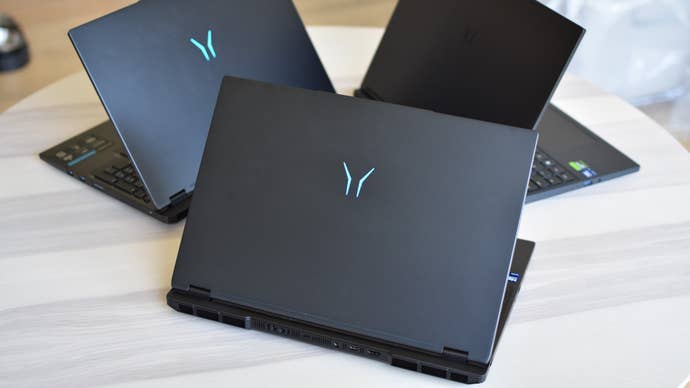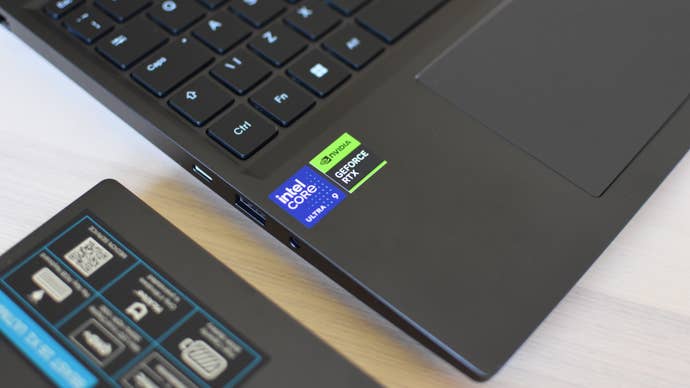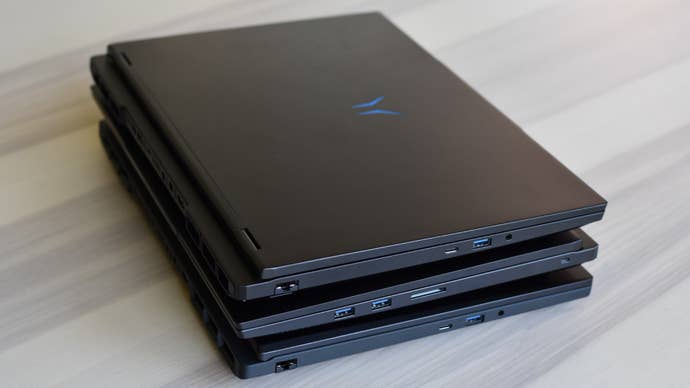RTX 5090 vs RTX 5080 vs RTX 5070 Ti: Which laptop GPU best deserves to top your lap?

Every couple of years, I remember gaming laptops exist, repressing the shame and horror at my own coverage failures deep enough to focus on the flat-folding PCs that are out there. And, more importantly, which amongst them is worth buying. This time, let us consider the three most frame-abundant laptop GPUs in Nvidia’s current stable: the GeForce RTX 5090, RTX 5080, and RTX 5070 Ti, all namesakes of their variably desirable desktop counterparts, and very likely the graphics chips du jour if you’re looking at the speedier end of the notebook market.
As ever with mobile GPUs, though, these aren’t just desktop graphics cards without the blocky coolers. Much more snipping and trimming has been done to ensure they endure the cramped innards of a portable laptop without swallowing the battery charge in one greedy gulp or, I dunno, catching fire. The mobile RTX 5080, for instance, uses the same Blackwell architecture, offers the same full DLSS 4 support, and features the same 16GB of GDDR7 VRAM as the desktop 5080. However! Its peak boost clock speed is slowed from 2617MHz to 1500MHz, while its CUDA core and RT (ray tracing) core counts fall respectively from 10752 and 84 to 7680 and 60.

The mobile RTX 5090 and RTX 5070 Ti face even deeper cuts, the former lacking more than half the desktop version’s CUDA cores (21760 versus 10496 here) and the latter shrinking from 16GB of 256-bit memory to 12GB of slower 192-bit VRAM. These differences aren’t just there to shortchange laptop owners – all three GPUs are massively more power-efficient than the desktop engines – but they do show, immediately, that the bigger, fatter originals aren’t reliable indicators for what you can expect from the mobile chips.
To find out what you can expect, I’m testing one laptop apiece for each of the three GPUs. For the RTX 5070 Ti, it’s a Medion Erazer Major 16 X1 (£2100), and for the RTX 5080 and RTX 5090, two variants of the Medion Erazer Beast 16 X1 Ultimate (£2500 and £3000). Price-wise, they’re all fairly typical, if not dead-on average for their graphics tiers, even with some very respectable build quality and 300Hz screens; colourful and efficient mini-LED panels, where the Beast 16 X1 Ultimates are concerned. Conveniently, they also share Intel Ultra Core 9 275HX CPUs, 2560×1600 resolutions, and 32GB RAM setups, as well as having been built by – presumably – the same assembly line robots. Any benchmarking should thus be fairer than a crisp May morning.
Since I don’t have any other GPUs tested at 1600p, here’s a straight comparison of the three to start with:
Unsurprisingly, the RTX 50 series’ general hierarchy remains intact: the RTX 5090 is always faster than the RTX 5080, which is in turn always faster than the RTX 5070 Ti. But although the 5090 hoards loads more VRAM and hundreds more of those CUDA shading cores… it’s not actually that much faster than the RTX 5080, is it? Just 4fps in Total War: Warhammer III, 6fps in both Horizon Forbidden West and F1 24, and 10fps in Alan Wake 2 (though since all three average below 60fps in AW2, where framerate differences are more noticeable, said 10fps does at least make for visibly smoother movements).
The addition of extra tech, like upscaling or ray tracing, doesn’t avail the RTX 5090 of a good counterargument either. Horizon Forbidden West actually averaged 102fps on both the 5090 and 5080 with DLSS on Quality mode, and although the further enabling of 2x frame generation gave the 5090 a modest lead – 151fps to the 5080’s 143fps – when you’re running this fast, single-digit differences are almost impossible to spot. Cyberpunk 2077 was a similar story: with both Quality DLSS and Psycho-quality ray tracing enabled, the 5090-equipped Beast averaged 62fps, practically indistinguishable from the 5080 laptop’s 59fps at the same settings.

The RTX 5070 Ti, lest we forget it, maintained a certain smoothness under the glare of Psycho RT, producing 47fps. That’s playable, though such a score does suggest that the RTX 5080 is still a clear step up from its next-one-down GeForce peer, in a way that the RTX 5090 often is not.
All these results may seem even more smushed-together if – yes, like me, I know – you’ve previously only been keeping tabs on desktop graphics cards. In which case, you’ll recall that for as much of an overpriced turboindulgence the ‘main’ RTX 5090 is, it does at least carve out a more commanding lead over other premium cards. Testing these laptops at 1440p and 1080p, where we can start throwing in comparisons between desktop and mobile GPUs, illustrates just how much faster it is – and how big the gulf is between form factors.
In fairness, the laptop GPUs can claim some extenuating circumstances, particularly that they’re dependent on that (heavily efficiency-focused) Intel Ultra CPU. All the desktop card results were taken on the latest RPS Test Rig, with an AMD Ryzen 7 9800X3D processor that’s repeatedly proven itself the fastest gaming CPU on the planet. That’s a big advantage even before getting into, say, cooling differences.
Still, the end result is worth remembering: laptop GPUs aren’t just a bit slower than their namesakes, they’re completely different products, and expectations should be adjusted accordingly. Especially with the mobile RTX 5090, which regularly puts out less than half the average frames of the desktop model. The mobile RTX 5080 and RTX 5070 Ti also see much lower numbers, though not to anywhere near the same extent. In Warhammer III, especially, the smaller, less power-hungry RTX 5080 version does an admirable job of closing the gap.

Back on the matter of strictly laptop vs laptop comparisons, the RTX 5080 is again only barely behind the RTX 5090 on average, even overtaking it in Shadow of the Tomb Raider at 1080p. Although it’s normal to see narrowing framerates at lower resolutions, where CPU bottlenecking becomes more of a factor, the 1440p and 1600p results also beg the question of how it’s worth spending hundreds more on the 5090 for just a mere sprinkling of extra frames. The RTX 5070 Ti, cheaper still, holds its own at these resolutions as well.
The RTX 5090 doesn’t even stake a compelling claim on path tracing, the ray-tracing-but-more technology that can easily bring non-premium GPUs to their knees. PT effects should therefore be the 5090’s territory, but both with and without some numbers-massaging from DLSS Multi Frame Generation, the mobile RTX 5080 stays right on its tail:
This is also where the RTX 5070 Ti makes its first real slip, being the only one to fall short of 30fps in Alan Wake 2 without frame gen. Meanwhile, it must be said that the RTX 5090 does feel slightly smoother just from those five extra frames over the RTX 5080 – an advantage that subsequently carries over to the 2x and 4x MFG configurations, as AI frames don’t contribute to the sensation of more reactive control input like regular, rendered frames do.
Even so, of these three mobile GPUs, I’d go for the RTX 5080 every time. The RTX 5070 Ti is no slouch but in tough-running modern games, the 5080’s performance is tangibly smoother, which simultaneously makes it a better bet for futureproofing. Conversely, the RTX 5090 doesn’t perform like the kind of upgrade you’d want for an extra £500. I suppose that’s less egregious than the desktop RTX 5090’s £1,000 premium over the desktop 5080, but then as we’ve seen, the laptop 5090 only runs half as quickly. 50% of the performance for 50% of the price bump? It’s fitting, at least. Not a better deal than the RTX 5080. But fitting.
Discover more from Webgames Play
Subscribe to get the latest posts sent to your email.











